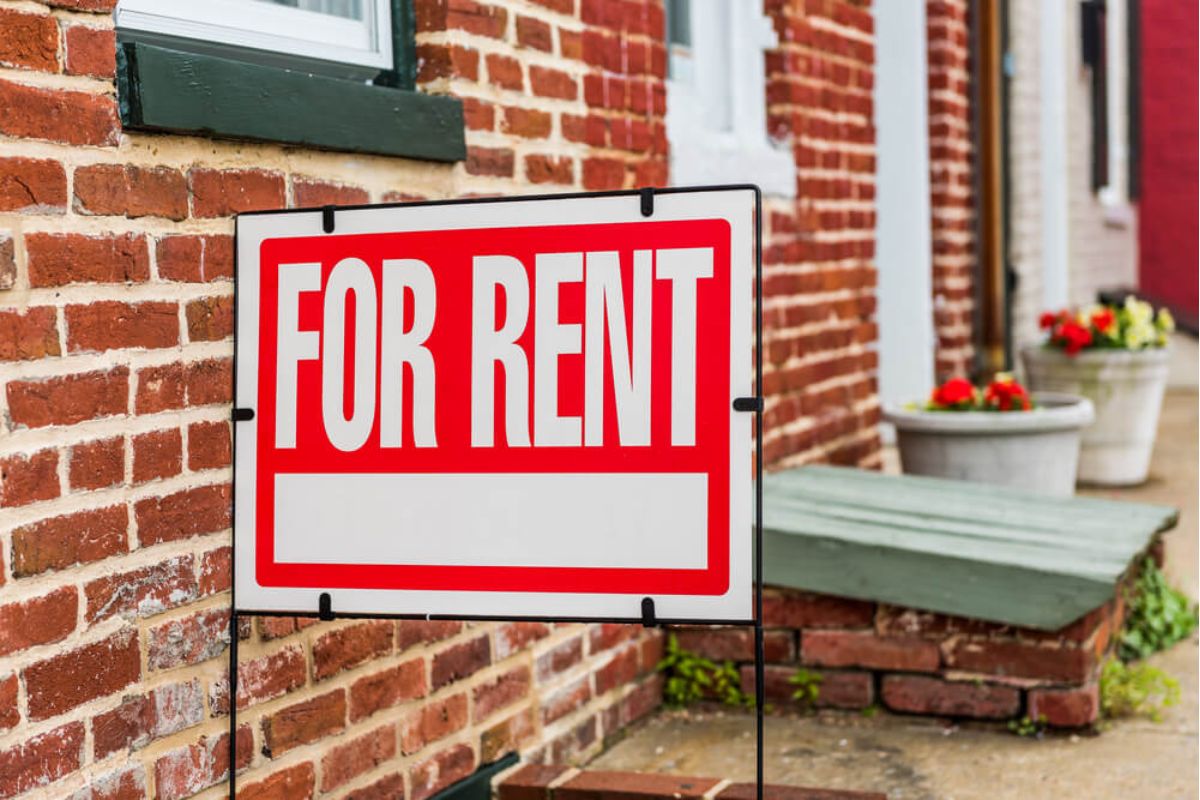Are you in the process of purchasing or renting a three-bedroom house? If so, one of your main concerns may be how much you will end up paying for electricity every month. Understanding the average 3 bedroom house electricity bill can help you better budget and prepare for this expense.
In this blog post, we'll explore everything you need to know about calculating your potential 3 bedroom home electricity bill, along with easy tips to save money on energy bills over time. Read on to get fully informed before signing that lease agreement!
What is the average electricity bill for a 3-bedroom house?
The average electricity bill for a 3 bedroom house will depend on a variety of factors including location, the size of the house, the number of occupants, and the energy efficiency of appliances and heating and cooling systems. However, according to recent data, the average electricity bill for a 3 bedroom house in the United States is around $130 per month.
How Location Affects Your Electric Bill?
Your electricity bill is influenced by your location as utility rates vary by region. For instance, in Utah, the rate is around 10.12 cents/kilowatt-hour (kWh), while in Hawaii, it can go up to 32.81 cents/kWh. Additionally, the average monthly electricity bill varies by region. The East South Central region has the highest average of $134.81, while the Mountain region has the lowest average of $98.94.
|
Region |
Average Monthly Electric Bill |
|---|---|
|
East North Central |
$102.40 |
|
East South Central |
$134.81 |
|
Middle Atlantic |
$107.89 |
|
Mountain |
$98.94 |
|
New England |
$126.65 |
|
Pacific Contiguous |
$100.52 |
|
Pacific Noncontiguous |
$151.94 |
|
South Atlantic |
$130.04 |
|
West North Central |
$110.09 |
|
West South Central |
$128.17 |
These regional averages can give you an idea of what to expect for your electricity bill, regardless of the size of your home. It's worth noting that electricity consumption also varies by region, so it's important to factor that in when estimating your energy needs.
How Heating and Cooling Affects Your Electric Bill?
Keeping a comfortable temperature inside your home can have a significant impact on your monthly energy bills. While modern heating and cooling systems have come a long way in terms of energy efficiency, they can still be expensive to operate. If you live in a region with particularly cold or hot temperatures, you may find yourself using more electricity than those in more temperate areas.
For instance, a central AC system alone can use up to 3.5 kW per hour, while a single window unit may use only 1.2 kW per hour. With daily cooling costs ranging from $2.90 to $8.74 per day, depending on your kWh rate, it's clear that HVAC expenses can add up quickly.
How Appliance Usage Affects Your Electric Bill?
Every appliance draws different amounts of power when in use, so it's crucial to be mindful of what you plug in and how often you use it. For instance, you may not know that an electric clothes dryer uses 2.5 to 4.0 kWh per load, while running a washing machine on hot with a warm rinse can consume 6.3 kWh per load.
Additionally, having Energy Star-rated appliances, devices, and electronics can help you cut down on your energy costs. By using these energy-efficient products, you can save up to 30% on your electric bills compared to only using non-Energy Star-rated devices.
How Other Utilities Affect Your Electric Bill?
Your electric bill can be affected by other utilities in your home, such as natural gas or propane. This is because homes with gas stoves, gas water heaters, or propane fireplaces may use less electricity than homes that rely entirely on electricity. Natural gas and propane are generally less expensive than electricity for similar tasks, so homes with all gas appliances can save up to 30% on their total energy costs.
However, it's important to note that natural gas and propane rates also vary, just like electricity rates. If you're considering switching to an alternative energy resource to save money, you should thoroughly research local costs to determine if it's financially beneficial.
How Number of Occupants Affects Your Electric Bill?
The electric bill is impacted by the number of occupants in the property, the duration of time spent at home, and the activities performed while there. According to national averages, the cost difference between having two and three occupants in a three-bedroom house is approximately $6 per month, as having more people active in the space leads to a higher electricity usage.
However, the total electric costs also depend on how the occupants spend their time at home and the number of hours they are there. For instance, due to the pandemic, many professionals started working from home, which caused their energy bills to surge by $40 to $50 per month in some cases.
This rise in energy bills was partly due to spending more time at home and using more appliances or systems. Moreover, the occupants might adjust their thermostat to a more comfortable temperature, resulting in extra strain on their HVAC system.
Apart from this, introducing a company computer to the home environment for work purposes also contributed to the increase in energy consumption. As the device is heavily used throughout the workday and kept on standby mode when not in use, it draws small amounts of power, which adds up to the overall consumption.
Even having a single device consistently on standby mode can significantly impact power consumption. In combination with increased activity in the house, it's not surprising that electricity bills increased.
How to Calculate Your Electric Bill?
Knowing how to calculate your electric bill is essential, especially if you want to keep your costs under control. If you have a 3-bedroom house, your electric bill will depend on several factors, including the size of your home, the number of occupants, and the types of appliances and electronics you use.
To get a better idea of your usage and costs, you can use tools like Neurio, Curb, or Sense, which can connect to your main electrical panel and provide you with accurate data on energy usage. This can help you identify areas where you can reduce your consumption and lower your bill.
Alternatively, you can use electricity usage monitors like the Kill-A-Watt meter to quickly check the electrical draw of individual appliances and calculate their kWh totals, which can also help you estimate your monthly electric bill.
10 Ways To Cut Your Electric Bill By Up To 75%
1. Get a smart and programmable thermostat
Investing in a smart thermostat is an excellent approach to begin reducing your electricity costs. With the potential to cut energy consumption by up to 30%, the benefits are substantial.
Fortunately, there is an array of smart thermostats available in the market to suit your requirements and budget. Some of the popular brands include Nest, Ecobee, and Honeywell.
2. Upgrade your lightbulbs
Upgrading your lightbulbs from CFL or incandescent to LED can result in significant energy savings. LED bulbs are not only more energy-efficient, but they also have a longer lifespan compared to traditional bulbs.
If every household in the United States switched to LED bulbs, we could save enough energy to power approximately 30 million homes. LED bulbs are the clear winner in terms of energy savings when compared to CFLs, and can even save up to $100 in energy usage costs over their lifespan.
If you're still uncertain about switching to LED bulbs, here are some reasons why LEDs are the better choice:
- Longer lifespan means less frequent replacements
- Lower energy usage translates to lower electricity bills
- Emit less heat, making them safer to use and causing less strain on your appliances.
3. Get rid of standby power
Did you know that even when turned off, your TV or cable box is still using electricity in standby mode? Phantom load or standby power is the electricity consumed by electronic devices when not in use. This means appliances like your microwave or TV that appear to be off, are still using electricity every minute of every day if left on standby.
By unplugging certain items when not in use, you could save about $100 per year for each device. Therefore, it's crucial to identify which devices are using standby power in your home and unplug them when not in use.
Common appliances that consume standby power include TVs, cable boxes, DVD players, stereo systems, microwaves, toaster ovens, coffee makers, and computer printers.
Unplugging these devices when not in use can help you save even more money on your electricity bill.
4. Be mindful of your home's temperature
To cut down on heating and cooling expenses, it's best to maintain your home's temperature at 65 degrees Fahrenheit, rather than higher or lower.
For instance, if you set your thermostat to 70 degrees Fahrenheit instead of 65 degrees Fahrenheit, it could lead to an additional expense of up to $200 annually! So, make sure to save that money by adjusting your thermostat lower during the colder months and higher during the warmer months.
An excellent way to stay comfortable while reducing your energy consumption is by using blankets to keep yourself warm during colder months and opening windows during warmer months to take advantage of the cool air. To stay mindful of temperature, keep these tips in mind:
During the winter months, set your thermostat to 65 degrees Fahrenheit and 75 degrees Fahrenheit during summer months.
Use blankets to keep yourself warm during colder months and open windows to take advantage of cool air during warmer months.
Ensure your home is adequately insulated to avoid frequently adjusting your thermostat.
5. Use a power strip
A power strip is an electrical accessory that enables you to plug in multiple devices and distributes electricity among them. The primary function of a power strip is to expand the number of devices you can plug into a single wall socket.
By employing power strips in your home, you can save not only space but also energy. This is because electronic devices continue to draw power even when turned off, which is referred to as standby power. By connecting all of your electronics to one power strip, you can effectively switch them off when not in use, conserving energy.
Moreover, power strips are readily available and budget-friendly, making them a perfect solution to lower your electricity bills. Using a power strip is an uncomplicated and effective method of reducing your energy consumption while also cutting down on costs.
6. Stop preheating your oven
Cut down on your energy usage and lower your electricity bill by eliminating the preheating step in your oven. If you're preparing food that doesn't require a long cooking time, there's no need to waste energy by preheating your oven. Instead, turn on the oven to the desired temperature when you're ready to cook, which can help you save both time and money.
If you have an electric stove, this can be particularly effective, since it eliminates the need to have the oven running for extended periods of time. While some may argue that preheating a gas stove is necessary for even cooking, it's worth testing to see if this step is actually necessary for your specific recipe.
7. Wash clothes in cold water
By washing your clothes in cold water, you're not only saving money, but you're also being eco-friendly. Heating water for laundry accounts for a significant portion of household energy use and contributes to greenhouse gas emissions. By choosing cold water instead, you can significantly reduce your carbon footprint and help protect the environment.
In addition to the financial and environmental benefits, washing clothes in cold water can also help preserve the quality and color of your clothes. Hot water can cause clothes to shrink, fade, and wear out faster, while cold water is gentler on fabric and helps preserve its quality over time. So not only are you saving money and energy, but you're also extending the life of your clothes.
8. Use a clothesline
According to the US Department of Energy, the average American household spends around $100 per year on drying clothes in a dryer. By switching to a clothesline, that cost could be cut in half, resulting in savings of up to $50 per year.
Furthermore, using a clothesline instead of a dryer can also help extend the lifespan of your clothing. The heat and tumbling action of a dryer can cause wear and tear on fabric over time, which can result in having to replace clothing more frequently. By air-drying your clothes, you can avoid this damage and keep your clothes looking new for longer.
9. Use a microwavable lunch bag instead of aluminum foil
One easy way to save money on your energy bill is to switch from using aluminum foil to a microwavable lunch bag. Not only is it effective, but it can also save you a lot of money in the long run! Imagine cutting out even just one sheet of aluminum foil from each meal you prepare – that could add up to hundreds of dollars saved each year!
Microwave safe bags are specifically designed for use in high temperatures, making them safe and convenient to use in the microwave. Plus, they are much easier to clean up than aluminum foil, which can be a hassle to deal with.
10. Conduct an energy audit
Conducting an energy audit can be a practical and straightforward way to take charge of your energy consumption and reduce your electric bills. This process involves examining all aspects of your home's energy use to identify areas where energy is being wasted.
Once you have a clear understanding of where energy is being lost, you can take steps to address the inefficiencies and reduce your energy consumption. There are various types of energy audits available, and you can choose one that best fits your needs, whether it's a professional audit or a DIY audit with online resources.
You can also contact your local utility company or visit websites such as EnergyStar.gov for more information on conducting an energy audit. By making necessary changes, such as upgrading appliances and adding insulation, you can reduce your environmental impact and save money on your electric bills.
Conclusion
In conclusion, the average electric bill for a 3-bedroom house can vary greatly depending on various factors such as location, climate, energy efficiency of the home, and the usage habits of its occupants. However, by implementing some simple tips like turning off lights and appliances when not in use, conducting an energy audit..., homeowners can take control of their electricity bills and reduce their overall energy consumption. By making these changes, homeowners can not only save money but also contribute to a more sustainable future by reducing their carbon footprint.



![Is Alexandria VA Safe? [2023 Updated]](https://www.allinfohome.com/storage/photos/63f329cf87bfe39c38006c42/Is_Alexandria_VA__Safe__1_.jpg)

